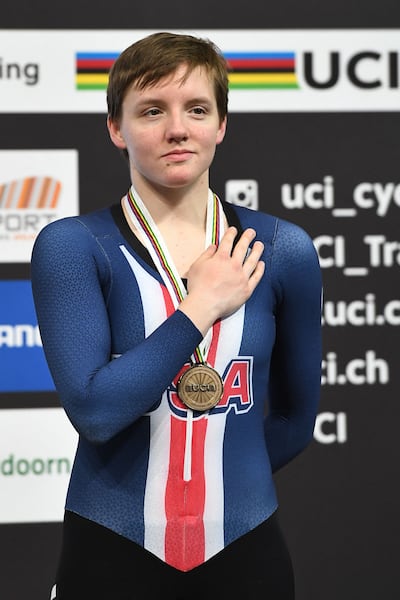On the Super Bowl pre-game show, 10 years ago, the CBS announcer Jim Nantz inadvertently misrepresented a statistic about concussion in women’s sport.
He said that “women’s soccer players were 2½ times more likely to suffer a concussion than a college [American] football player”.
The statistic that had slipped through his fingers was a straight comparison between women’s soccer and the men’s game, which only made it alarming in a different way.
The Super Bowl pre-game show has a huge audience and Nantz’s gaffe caused a momentary spike in curiosity. Why would the numbers be different for women and men? Was it just in soccer? Where was the evidence, the research?
READ MORE
One of the people watching the show was Katherine Snedaker. A medical social worker, Snedaker was intimate with concussion and its complex aftermath. In her lifetime she had suffered multiple concussions, in different settings, but five years earlier, in 2008, one her sons had suffered a series of concussions that had caused him to miss nearly a year in school.
While caring for him she went looking for answers to questions that, to her surprise, weren’t readily available.
[ Report finds concussion most common injury in AIL and schoolboy Senior CupOpens in new window ]
“I sought out concussion experts, emailed researchers and attended scores of medical professional conferences to find an alternative to the isolating prescription of ‘rest until symptoms cleared,’” wrote Snedaker, years later.
Her search for knowledge brought her into contact with everyday ignorance: local GPs, teachers, sports coaches, didn’t know nearly as much as they needed to.
Unwilling to just park her exasperation and walk away, Snedaker set up support groups for other parents, and “my quest to help my own child had now expanded to wider and wider circles of need,” she wrote.
Snedaker soon became known as the “concussion Mom”. What emerged over time was a pattern she didn’t expect.
“Working in the clinics and talking to families, I began to notice young girls that weren’t healing as fast as their families, friends and teachers felt they should. I founded a unique group for teens with PCS [Post-Concussion Syndrome] which ended up being all females.”
Snedaker became immersed in the issue and the information deficits and the lives of girls and women impacted by concussion. Ten years ago, inspired by Nantz’s misstep – and while she was locked in a battle with breast cancer – Snedaker set up a website where people could access the research she had sourced over the years.
From that seed, PINK Concussions grew into a non-profit, volunteer organisation founded on the mission to “improve the research, medical care and community care for females with brain injury”.
Over the last decade Snedaker’s campaigning zeal has persuaded more than 80 experts to join her professional advisory board, and amplify the issues at every opportunity.
On Thursday, she will host a 90-minute expert-led debate at the three-day World Brain Injury Conference in Dublin, exploring issues around concussion in women’s sport that, over the years, have been harmfully neglected. What exactly does the data say, and what do we need to do about it?
“I have been waiting 10 years to have this debate,” said Snedaker on a Zoom call last week.
“To try to push the envelope. Do we need a separate concussion protocol for women? We know from the research, for example, that a woman’s menstrual cycle changes one way or another after a concussion. But sports doctors aren’t gynaecologists, right?”

In the greater sensitivity around concussion in sport, and the heightened awareness of its dangers, the unthinking assumption would have been that it was the same for men and women. For many years, medical science would have done very little to challenge this notion.
A paper published three years ago by the British Journal of Sports Medicine showed that of 171 concussion studies conducted since 1967, only 1% of the research focused exclusively on female athletes, and 40% of the studies had no female participants. At the heart of this monumental imbalance was the unsafe, unscientific belief that there was no gender difference to consider.
By 2012 enough research had been done for the American Medical Society for Sports Medicine to issue an important position statement: “Recent data suggests that in sports with similar rules female athletes sustain more concussions than their male counterparts. In addition, female athletes experience, or report, a higher number and severity of symptoms, as well as a longer duration of recovery, than male athletes, in several studies.”
If that’s the case, why are the concussion protocols the same for women and men?
In mishandled concussion cases there are different outcomes. Occasionally – rarely – the outcomes are tragic.
In a brilliant and harrowing piece on CNN.com Amy Woodyatt shone a light on the lives and deaths of two young athletes who died by suicide, having suffered concussions that were not properly treated.
Kelly Catlin was a US track cyclist, who had been a three-time world champion and Olympic silver medallist; Ellie Souter was a teenage British snowboarder who had won a medal at the European Youth Games and had set her sights on the 2022 Winter Olympics. Catlin was 23 when she died; Souter had just reached her 18th birthday. In both cases there were catastrophic gaps in their treatment.

In Dublin on Thursday, Snedaker will present the PINK Concussion Sports Award to Neil and Morven Cattigan, whose daughter Siobhan suffered brain injuries while playing rugby for Scotland, and later died in tragic circumstances. The Cattigans’ story has been covered with tenacity and tenderness by David Walsh in The Sunday Times since last summer.
“Siobhan Cattigan’s life ended on November 26th, 2021,” wrote Walsh recently. “Aged 26, she died after a relatively sudden and terrifying deterioration in her mental health. Her parents, Neil and Morven, believe the crisis that led to her death was caused by a traumatic brain injury suffered while playing rugby for Scotland. They have had no answers and little sympathy from the Scottish Rugby Union.”
In the awards citation on the PINK Concussions website, Snedaker writes: “Siobhan’s parents are fighting for the development of female-focused concussion educational programs, research and protocols. They wish that changes to how female concussions are handled with be Siobhan’s legacy, so no other person will suffer as she did.”
Snedaker has been a tireless, courageous, relentless pioneer on this issue. The conversation she has started is urgent and vital and needs an audience. There must be change.
















